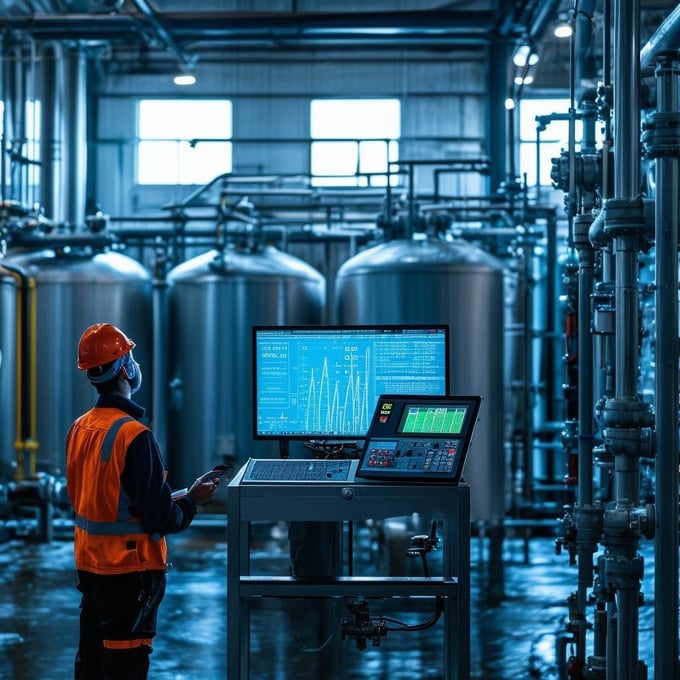
CO2 Sensors in Wastewater Treatment: A Comprehensive Guide to Monitoring and Optimization
CO2 Sensors in Wastewater Treatment: A Comprehensive Guide to Monitoring and Optimization
In modern wastewater treatment facilities, precise monitoring of carbon dioxide (CO2) levels has become increasingly crucial for optimizing treatment processes and ensuring regulatory compliance. As an essential parameter in biological treatment processes, CO2 monitoring provides valuable insights into system performance and helps operators make informed decisions. This comprehensive guide explores the significance of CO2 sensors in wastewater treatment and how they contribute to more efficient operations.
Understanding CO2 Sensors in Wastewater Applications
CO2 sensors play a vital role in monitoring biological processes within wastewater treatment systems. These sophisticated devices measure carbon dioxide concentrations, which serve as key indicators of biological activity and treatment efficiency. Modern CO2 sensors utilize various technologies, including:
| Sensor Type | Operating Principle | Key Benefits |
|---|---|---|
| Infrared (IR) Sensors | Measures CO2 absorption of infrared light | High accuracy, long-term stability |
| Electrochemical Sensors | Chemical reaction generates electrical signal | Cost-effective, compact design |
| Photoacoustic Sensors | Measures acoustic waves from CO2 absorption | High sensitivity, minimal drift |
Critical Applications of CO2 Sensors in Wastewater Treatment
CO2 sensors serve multiple essential functions in wastewater treatment processes:
1. Biological Process Monitoring
CO2 levels directly indicate microbial activity in biological treatment processes. Higher CO2 concentrations typically suggest increased biological activity, while sudden changes may signal process disruptions requiring immediate attention.
2. Aeration System Optimization
By monitoring CO2 levels, operators can fine-tune aeration systems to achieve optimal oxygen transfer rates while minimizing energy consumption. This optimization can lead to significant cost savings and improved treatment efficiency.
3. Process Control and Automation
Integration of CO2 sensors with SCADA systems enables automated process control and real-time adjustments to maintain optimal treatment conditions. This automation helps maintain consistent treatment quality while reducing operator workload.
Selecting the Right CO2 Sensor for Wastewater Applications
When choosing a CO2 sensor for wastewater treatment applications, consider these critical factors:
Measurement Range
Select a sensor with a measurement range appropriate for your specific application. Typical ranges for wastewater treatment are:
- Aerobic processes: 0-5,000 ppm
- Anaerobic processes: 0-20,000 ppm
- Digester monitoring: 0-100,000 ppm
Environmental Considerations
Wastewater treatment environments present unique challenges for sensor operation. Key considerations include:
- Humidity resistance (up to 100% RH)
- Chemical resistance to H2S and other corrosive gases
- Temperature compensation capabilities
- IP67 or better protection rating
Integration with Alarm and Monitoring Systems
Modern CO2 sensors should integrate seamlessly with existing monitoring and alarm systems. RACO Manufacturing & Engineering's Catalyst and AlarmAgent.com platforms provide comprehensive solutions for:
- Real-time CO2 level monitoring
- Automated alarm notifications
- Data logging and trend analysis
- Remote monitoring capabilities
Maintenance and Calibration Requirements
Proper maintenance ensures reliable CO2 sensor operation:
| Maintenance Task | Frequency | Purpose |
|---|---|---|
| Calibration check | Monthly | Ensure measurement accuracy |
| Sensor cleaning | Bi-weekly | Remove buildup and contamination |
| Full calibration | Quarterly | Maintain long-term accuracy |
Best Practices for CO2 Sensor Implementation
To maximize the benefits of CO2 sensor installation:
1. Strategic Placement
Position sensors at key process points for optimal monitoring:
- Aeration basin entry and exit points
- Digester headspace
- Return activated sludge lines
2. Data Integration
Implement comprehensive data integration strategies:
- Connect sensors to SCADA systems
- Establish trending and reporting protocols
- Configure automated response systems
Future Trends in CO2 Sensor Technology
The wastewater treatment industry continues to evolve, with several emerging trends in CO2 sensor technology:
- Advanced digital communication protocols
- Improved self-diagnostic capabilities
- Enhanced durability and reliability
- Integration with artificial intelligence and machine learning systems
Conclusion
CO2 sensors are essential tools for modern wastewater treatment facilities, providing crucial data for process optimization and control. By understanding sensor selection criteria, maintenance requirements, and implementation best practices, operators can maximize the benefits of these sophisticated monitoring devices. For optimal results, consider integrating CO2 sensors with RACO's advanced monitoring and alarm systems to ensure comprehensive process control and regulatory compliance.
